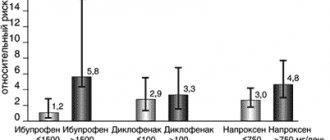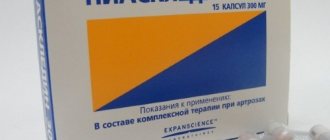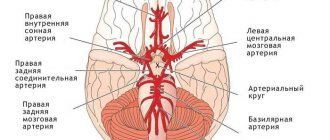A pronounced inflammatory reaction with predominant damage to the lungs is the basis of the pathogenesis of COVID-19. Colchicine is a drug with an anti-inflammatory effect, successfully used in the treatment of gout, rheumatological diseases, and pericarditis. Recent studies have shown that colchicine not only has a favorable cardiovascular safety profile, but also reduces the risk of ischemic events (see COLCOT trial https://www.nejm.org/doi/full/10.1056/NEJMoa1912388).
The JAMA Network published the results of a small, prospective, randomized, open-label study that assessed the efficacy and safety of colchicine therapy in patients with COVID-19. The study included 105 hospitalized patients with COVID-19, median age 64 years. Colchicine was prescribed in a loading dose of 1.5 mg, after 60 minutes – another 0.5 mg, then 0.5 mg 2 times a day for 3 weeks. Almost all patients included in the study also received chloroquine or hydroxychloroquine, as well as azithromycin.
The primary endpoint of the study is clinical deterioration in the course of COVID-19 within 3 weeks from the moment of randomization (by 2 or more points on the standard WHO scale, where 1 point is assigned for good health and 7 for death).
The primary endpoint occurred in 14.0% of patients in the control group and 1.8% of patients in the colchicine group (odds ratio, 0.11; 95% CI, 0.01 to 0.96; P = .02). The figure shows Kaplan-Meier curves reflecting patient survival without deterioration within 3 weeks after randomization.
Figure 1. Kaplan-Meier curves: survival without worsening COVID-19 depending on therapy
The level of markers was also monitored over time: the concentration of CRP, high-sensitivity cardiac troponin, the number of leukocytes and platelets did not differ between groups, while the concentration of D-dimer during colchicine therapy was significantly lower (the average value in the colchicine group was 0.76 [0.41 – 1.59] µg/ml, in the control group – 0.92 [0.68 – 2.77] µg/ml, p = 0.04).
Low-dose colchicine therapy was well tolerated, with diarrhea being the only common side effect (45.5% in the colchicine group vs. 18.0% in the control group; P = 0.003). Diarrhea rarely led to drug withdrawal or electrolyte disturbances. No serious side effects were reported according to study criteria.
Thus, colchicine improves the clinical course of COVID-19 by providing anti-inflammatory and possibly indirect antithrombotic effects. Given the low power of the study, the presented results should be interpreted with caution.
Several other randomized trials evaluating the use of colchicine in patients with COVID-19 are currently ongoing (12 registered on ClinicalTrials.gov). Among these, two studies include patients with cardiac manifestations of COVID-19: the large Colchicine Coronavirus SARS-CoV-2 (COLCORONA) study, including outpatients, and the smaller Colchicine for the Treatment of Cardiac Injury in Hospitalized Patients with COVID-19 (COLHEART) study -19) trial, which includes hospitalized patients.
Based on materials:
1) Deftereos SG, Giannopoulos G, Vrachatis DA, et al. Effect of Colchicine vs Standard Care on Cardiac and Inflammatory Biomarkers and Clinical Outcomes in Patients Hospitalized With Coronavirus Disease 2021: The GRECCO-19 Randomized Clinical Trial. JAMA Netw Open. 2020;3(6):e2013136. doi:10.1001/jamanetworkopen.2020.13136
https://jamanetwork.com/
2) Rabbani AB, Parikh RV, Rafique AM. Colchicine for the Treatment of Myocardial Injury in Patients With Coronavirus Disease 2019 (COVID-19)—An Old Drug With New Life? JAMA Netw Open. 2020;3(6):e2013556. doi:10.1001/jamanetworkopen.2020.13556
https://jamanetwork.com/
Text: Shakhmatova O.O.
Pharmacodynamics and pharmacokinetics
The principle of action is based on inhibition of the process of phagocytosis of microcrystals of uric acid salts, on reducing the rate of migration of leukocytes to the site of inflammation. Colchicine suppresses (partially or completely) the process of cell division at the metaphase and anaphase stages, has an antimitotic effect, and prevents degranulation of neutrophils.
The drug prevents the development of amyloidosis by reducing the formation of amyloid fibrils . Highly effective in relieving attacks of acute gout. 75% of patients experience improvement in well-being within the first 12 hours of treatment. In 80% of patients, adverse reactions from the digestive system are recorded.
Intravenous administration of the drug allows you to avoid adverse reactions from the gastrointestinal tract and accelerate the onset of the clinical effect. The likelihood of repeated acute attacks of gout is reduced by ¾ of patients when taking 1-2 mg of colchicine daily.
The medication reduces the activity of dopamine beta-hydroxylase and helps prevent acute attacks in patients with familial Mediterranean fever . In patients with primary AL amyloidosis, Colchicine increases life expectancy.
For systemic scleroderma, the drug has a positive effect on the skin, reduces dryness, and softens the skin.
Overdose
Manifested by severe diarrhea, severe dehydration with a drop in blood pressure, epigastric pain, vomiting, nausea, hemorrhagic gastroenteritis , respiratory depression, convulsions, oliguria , ascending paralysis , hematuria , decreased myocardial contractility.
The development of pulmonary infiltrates, acute renal failure , and hepatocellular damage is rarely recorded. On the sixth day after an overdose, severe inhibition of bone marrow hematopoiesis is possible with the development of coagulopathy , thrombocytopenia , and leukopenia . Patients are treated at a poison control center.
At the moment, no specific antidote has been developed.
Monitoring of electrolyte balance, normalization of blood gas composition, anti-shock measures, auxiliary ventilation, and monitoring of airway patency are required. Hemodialysis has not proven its effectiveness.
Main indications
The drug colchicil is most often prescribed for the treatment of gout. This disease is characterized by acute joint pain due to impaired uric acid metabolism and the deposition of urate in tissues. The drug is indicated for relieving pain during exacerbation of the disease and slowing its progression.
In addition, colchicil is used, the instructions for use focus on this, for the treatment of other pathologies:
- Amyloidosis, when a complex protein-polysaccharide compound, amyloid, is deposited in tissues. This leads to malfunctions in almost all systems and organs in the body.
- Inflammatory diseases in otorhinolaryngology and dentistry.
- Mediterranean fever, which is a hereditary disease and is associated with the deposition of amyloid in tissues. The main symptom is a periodic sudden increase in body temperature and severe chills.
- Phlebitis. In this case, inflammation of the venous wall occurs against the background of pathologies of an infectious and inflammatory nature.
- Scleroderma. The disease is characterized by the appearance of scar tissue on the skin and internal organs.
- Chondrocalcinosis. In pathology, calcium pyrophosphate crystals are deposited in the area of the articular cartilage and bursa, which causes pain.
Indications for use
Colchicine tablets are prescribed:
- for gout ;
- amyloidosis;
- inflammatory diseases in otorhinolaryngological and dental practice;
- for Mediterranean fever ;
- phlebitis;
- scleroderma;
- chondrocalcinosis;
- gouty arthritis.
Possible adverse reactions
Colchicil, the price of which is quite reasonable, as confirmed by reviews and manufacturers warn, has many side effects. This means that you cannot make a decision about drug treatment on your own.
Most often, when taking the drug, negative reactions from the digestive system are observed. These are various dyspeptic disorders: nausea, vomiting, diarrhea, etc. Such symptoms are accompanied by abdominal pain. Additionally, various problems arise with the functioning of the urinary system.
Less commonly, other side effects occur during treatment with the drug:
- The functioning of the hematopoietic system is disrupted. In severe cases, with long-term use, agranulocytosis develops.
- Dermatological reactions occur. In severe cases, long-term use causes alopecia.
Drinking alcoholic beverages can cause serious side effects.
Colchicine price, where to buy
In Moscow, as well as throughout Russia (in St. Petersburg, Novosibirsk and other cities), the drug is very difficult to find. You can sometimes find this medication in large and specialized pharmacies in Moscow and St. Petersburg; we recommend calling large pharmacy chains in advance to find out about the availability of the medication.
Large online pharmacies do not sell this product. You can buy medicine at your own risk using advertisements on the Internet, however, you should remember that the product sent may turn out to be a fake or may not be sent at all. The price of the package is very high and amounts to at least 2000 rubles.
In Ukraine (Kyiv, Odessa, Kharkov, and other cities) the medicine is sold. The price of Colchicine in Ukraine is about 500 hryvnia for a package of 40 tablets.
- Online pharmacies in RussiaRussia
Interaction
The likelihood of developing myopathy increases in patients with pathology of the renal system while taking Cyclosporine .
Colchicine can be taken in combination therapy with uricosuric medications and Allopurinol .
The drug enhances the effectiveness of sympathomimetic and depressive agents.
Colchicine interferes with the absorption process of Cyanocobalamin .
Thrombocytopenia and leukopenia develop when taking NSAIDs and medications that cause myelodepression .
Drugs that acidify urine and cytostatics reduce the anti-gout activity of the drug. The opposite effect is recorded when taking alkalizing agents.
Features of the drug
Colchicine, which affects uric acid metabolism, is produced on a plant basis. The active ingredient of the same name in the drug is isolated from Colchicum splendid. This herbaceous plant has been used in folk medicine for a long time to reduce joint pain and prevent the progression of inflammatory processes.
The drug is produced in tablet form. They are most often white, but sometimes have a slightly yellowish tint. Round, biconvex tablets are scored, which makes it easier to adhere to the prescribed dosage.
The medicine has analgesic and anti-inflammatory effects. After taking it, it is possible to quickly stop an acute attack of gout. In addition, the active substance delays the deposition of uric acid microcrystals in tissues.
Side effects
Digestive tract: nausea, malabsorption syndrome , increased liver enzymes, vomiting, decreased appetite, epigastric pain, diarrhea syndrome vitamin B12 deficiency .
Nervous system: neuropathy , peripheral neuritis , depression .
Hematopoietic organs: thrombocytopenia , neutropenia (agranulocytosis) , aplastic anemia , leukopenia .
Allergic response in the form of measles-like rash , urticaria .
Local reactions manifest themselves in the form of necrosis of surrounding tissues and irritation at the injection site.
Myopathy , azoospermia , disturbances in the renal system, and temporary alopecia are also noted .









